Samsung Galaxy S III Review - AT&T and T-Mobile USA Variants
by Brian Klug on June 20, 2012 12:01 AM ESTBefore we dive into the review of Samsung’s Galaxy S 3 variants for the USA (henceforth SGS3), it’s worth it to quickly talk about how much the SGS3 launch in the US differs from that of SGS2. Since announcing the international SGS3, it has been just under a month and a half, and here we are with finalized software and hardware and devices which will be on retail and carrier shelves within a week. When rumors of the SGS3 started circulating, one of the things that resonated the most for me was that Samsung was going to put a lot of emphasis on the USA launch, and dramatically narrow the gap between announcement and availability. When you look at that roughly month and half, and compare to the SGS2 launch, which started with its announcement at MWC and launch in the USA in September and October, it’s really obvious to see how much that ended up being true.
Reviewing the SGS3 USA variants is much easier this time, since all of the devices are basically identical, with the exception of air interfaces. They share the same exact exterior dimensions, display, battery, and accessories. With the exception of those air interfaces, all five variants ship with the same Snapdragon S4 MSM8960 SoC at 1.5 GHz, 2 GB of LPDDR2 RAM, 8 MP rear facing camera, dual band WiFi, Bluetooth 4.0, and a microSD card slot. The only difference is whether you get one with 16 or 32 GB of onboard storage, some software preloads, and the appropriate bands and cellular interfaces for the carrier.
I cannot state enough how huge that is for Samsung, as for the first time we have something other than the iPhone shipping in a nearly identical form on five different carriers. When you look at the evolution of Galaxy S, you can see how much Samsung has built upon this more and more each generation to get to this point. With Galaxy S, there was no consistent branding or naming in the USA - you had variants like the Vibrant, Captivate, Epic 4G, and Fascinate. With SGS2 Samsung nailed down the branding part way (all the variants were “Samsung Galaxy S 2” and then some carrier specific suffix) but ultimately had some differences in hardware platform (one was Exynos 4210, most were APQ8060). With SGS3 Samsung now has nailed down the exterior appearance and battery form factor (which will foster a big accessory ecosystem), the last part of the branding (all of the variants are just Samsung Galaxy S 3), and the hardware platform itself (same display, camera, SoC, etc). It’s obvious that Samsung understands the value of having a coherent message and launch spread across the carriers. A couple of weeks ago, I had the opportunity to play with basically all of the SGS3 variants in NYC, and get a first hand appreciation for how consistent things are across the lineup now. Without looking at the branding on the back of the phone (note that it isn’t on the front, for once), there literally is no dead giveaway that one SGS3 is a Verizon model, or a T-Mobile model, or an AT&T, or a Sprint model. That alone says quite a lot.
Anyhow, on to the devices themselves. I was sampled the T-Mobile and AT&T SGS3s by Samsung just a few days ago, and have been playing with them, benchmarking, and battery life testing them nonstop. Since seeing the SGS3 at the launch event in London, I have to admit that the design has grown on me considerably.
Samsung claims that its SGS3 design is derived from nature, and I guess you can somewhat see a connection between a device with a mostly spherical overall shape and large radii curves, and the spherical form that gravity induces orbital bodies into into being. Either way, it’s a clear evolution of the APQ8060 based SGS2 devices that we saw at the end of the SGS2 rollout - phones like the T-Mobile SGS2 or AT&T SGS2 Skyrocket - and thus shouldn’t have come as a huge surprise.
I played with a white model at the Unpacked 2012 event which was the first time I’d seen SGS3, and set my impressions about aesthetics based on that color. Samsung made sure to sample both colors for launch – pebble blue, and white. Oh, and the blue color is indeed the same across all 5 variants. After seeing both, I have to admit I prefer the pebble blue device, since it has a unique metallic appearance in the right light which definitely sets it apart.
The last differentiation is that AT&T will get a red color that I haven’t seen demonstrated yet, though that’s at some unknown point in the future this summer. For now, the white or pebble blue choice will be the one most customers will be forced to make. Just like other white devices, my main gripe is that although the color hides surface scratches (sleeks) and fingerprints better, dirt on the surface casts a shadow through the front glass onto the white below, and is easy to spot on the back plastic.
Samsung has largely made the same material choices with the SGS3 as it has other phones in the past, which means the exterior is entirely shiny, glossy plastic. The result is in-palm feel which really is a throwback to the initial Galaxy S or Nexus S. That choice is probably my only real gripe with the device overall, and it’s the result of a weight minimization design direction by Samsung’s design team more than anything else. The thought process is that customers value lighter weight devices over ones with beefier, metallic material choices. In addition, optimizing for lighter weight translates to less potential energy when dropped from a given height. I think it’s totally valid for Samsung to make that case, but I still find myself wishing that the SGS3 had used the textured surface that SGS2 did for the backside, which seemed to yield the best of both worlds. I wish even more that the device had a more unique feel like the bead-blasted polycarbonate or plasma-sputtered metal that other OEMs have gone with.
The other thing to talk about is how much bigger the SGS3 is compared to other phones, and the answer is really that it isn’t much larger than the Galaxy Nexus. In fact, if you look at the comparison table below, you’ll notice it’s both 2 mm wider and 1 mm taller than the Galaxy Nexus, but thinner and lighter. That’s not bad at all considering display size has gone up from 4.65“ to 4.8” diagonal, and I believe people just inspecting display size expected a dramatically larger device than the SGS3 ended up being.
| Physical Comparison | ||||
| Samsung Galaxy Nexus (LTE) | Apple iPhone 4S | Samsung Galaxy S 2 | Samsung Galaxy S 3 (USA) | |
| Height | 135.5 mm (5.33") | 115.2 mm (4.5") | 125.3 mm (4.93") | 136.6 mm (5.38" ) |
| Width | 67.94 mm (2.67) | 58.6 mm (2.31") | 66.1 mm (2.60") | 70.6 mm (2.78") |
| Depth | 9.47 mm (0.37") | 9.3 mm ( 0.37") | 8.49 mm (0.33") | 8.6 mm (0.34") |
| Weight | 150 g (5.3 oz) | 140 g (4.9 oz) | 115 g (4.06 oz) | 133g (4.7 oz) |
| CPU | 1.2 GHz Dual Core Cortex-A9 OMAP 4460 | Apple A5 @ ~800MHz Dual Core Cortex A9 | 1.2 GHz Exynos 4210 Dual Core Cortex A9 | 1.5 GHz MSM8960 Dual Core Krait |
| GPU | PowerVR SGX 540 | PowerVR SGX 543MP2 | ARM Mali-400 | Adreno 225 |
| RAM | 1 GB LPDDR2 | 512MB LPDDR2-800 | 1 GB LPDDR2 | 2 GB LPDDR2 |
| NAND | 32 GB NAND | 16GB, 32GB or 64GB integrated | 16 GB NAND with up to 32 GB microSD | 16/32 GB NAND with up to 64 GB microSDXC |
| Camera | 5 MP with AF/LED Flash, 1080p30 video recording, 1.3 MP front facing | 8 MP with LED Flash + Front Facing Camera | 8 MP AF/LED flash, 2 MP front facing | 8 MP with LED Flash + 1.9 MP front facing |
| Screen | 4.65" 1280x720 HD SAMOLED | 3.5" 640 x 960 LED backlit LCD | 4.27" 800 x 480 SAMOLED+ | 4.8" 1280x720 HD SAMOLED |
| Battery | Removable 6.85 Whr | Internal 5.3 Whr | Removable 6.11 Whr | Removable 7.98 Whr |
As an aside, I think far too much time has been spent debating the optimal display size. Clearly there are two factors at play here - a larger display is something immediately appealing to mass market shoppers, but at the same time there is an upper bound to overall device size for pocketability. The factor that often gets left out of most of these smartphone display size discussions that most shoppers aren’t my (or the AnandTech readership) demographic, male, 18–34, and obsessed with the latest and greatest tech. There’s an increasingly aging populace in the US with degrading eyesight, and for them, larger displays translate to a real value prospect. I find the Galaxy Note to be my personal upper bound for pocketable devices for a few reasons, and since the SGS3 is smaller, I have no issue.
Button placement on the SGS3 is standard fare for a Samsung phone. The standby/lock button is on the top right side of the device, right where your thumb rests if held in the right hand, or index finger for the left hand.
The volume rocker is on the left side the same place on the device, and the headphone jack is up top. MicroUSB gets located at the bottom, just like the SGS2.
There are two microphones on the SGS3, one up top just right of the thumb groove for the battery cover, one at the bottom just to the right of microUSB. These are used for ambient noise cancelation on calls and stereo audio recording for video just like so many other phones now.
Peeling the battery cover off it’s immediately apparent how much space the SGS3 dedicates to battery, which is now a relatively gargantuan 7.98 watt-hours.
Samsung has also gone to a 3.8V nominal (as opposed to 3.7V) Lithium-ion battery chemistry, joining the ranks of Motorola who was first to adopt this higher voltage. Samsung continues to use the battery surface as the place to locate the NFC coil antenna. Interestingly enough just left of that are two pogo pins ostensibly for using a wireless charger back (which Samsung has shown), so I’m assuming Samsung’s hardware will disable NFC while you have that inductive charger attached. Below the battery is the microSIM port, and microSD port which now accommodates up to 64 GB microSDXC cards. At the very top is the speakerphone grille, 8 MP camera, and LED flash.
On the front up top are (from left to right) the RGB notification LED, earpiece grille, proximity and ambient light sensor, and 1.9 MP front facing camera. At bottom is the other interesting design consolidation for SGS3 - all five USA variants include the three button scheme that was previously basically only used in international phones. At left is menu, middle is home, and right is back. This is different from the three button scheme that HTC has adopted (back, home, and task switcher) and means that Samsung doesn’t need to use an on-screen menu button for applications which haven’t fully depreciated its use. These buttons disappear completely when they’re not backlit, which is awesome but can be initially confusing for users getting used to the three button scheme. Personally, I appreciate how they completely disappear on both the white and pebble blue variants.
Like Samsung did with the Galaxy Note, they’re also making a battery cover with an attached folding front cover. The inside material is soft felt, the outside is a lightly ribbed pleather. I liked the cover when I saw it the Galaxy Note, and like it on the SGS3 a whole lot. I hate screen protectors, but at the same time protecting the display against dirt (or other phones…) scratching it by using something makes sense when it’s in your pocket.
That pretty much wraps up my thoughts on the aesthetics of the SGS3, and the USA variants completely mimic the international version. It’s a design which has grown on me in the month and a half since I saw it officially unveiled and will no doubt be wildly successful in spite of not mapping 1:1 to the enthusiast wish list.


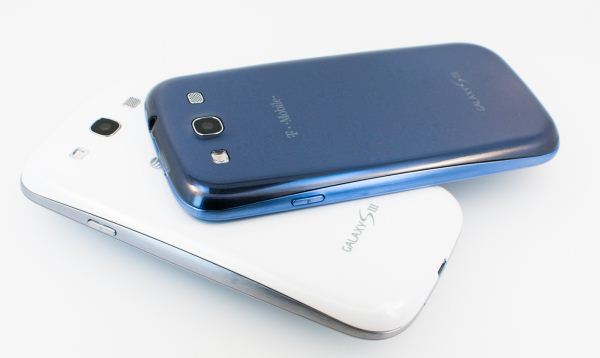

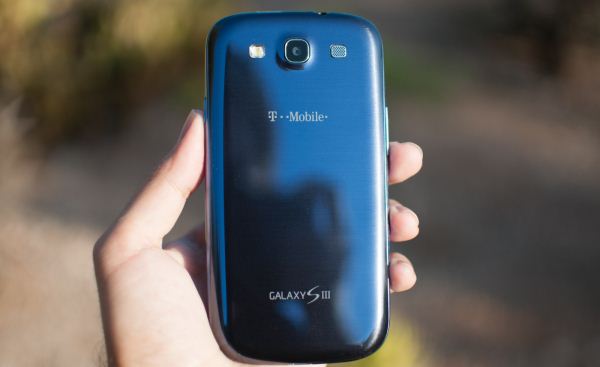
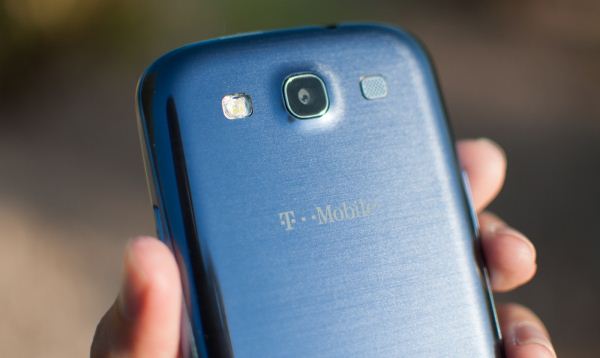
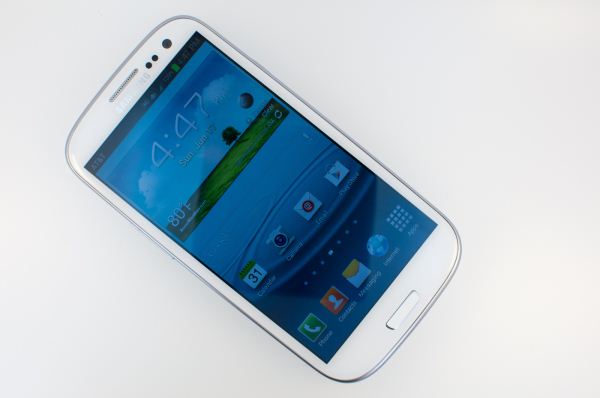
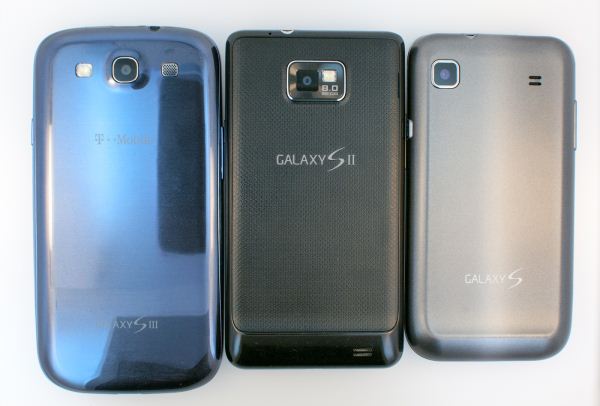

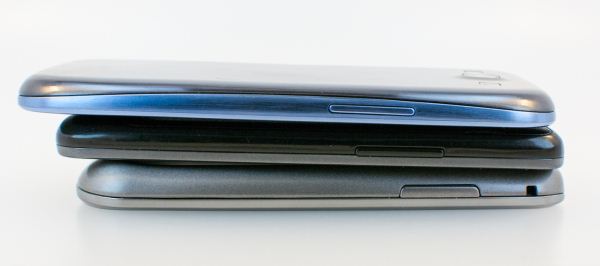
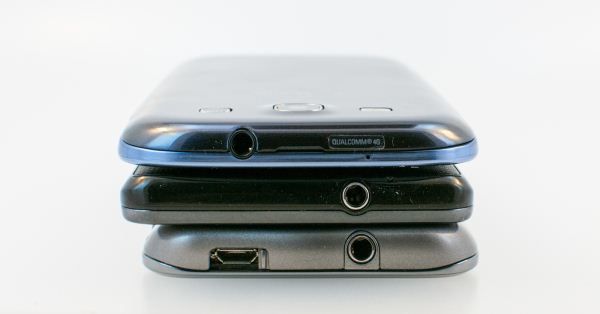


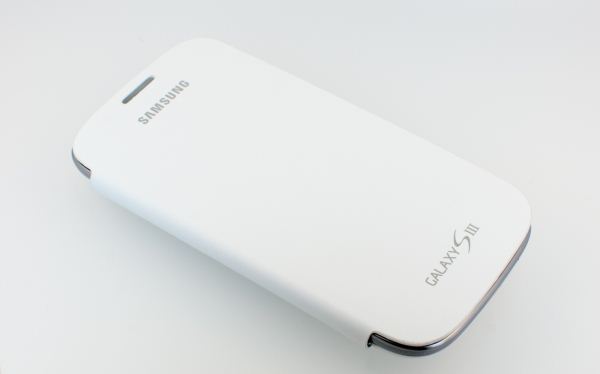














107 Comments
View All Comments
dijimoto - Wednesday, June 20, 2012 - link
I just realized it was in the title ICS version 4.0.4, ugh...EJ257 - Wednesday, June 20, 2012 - link
So does it use both GPS & GLONASS simultaneously? Or can you set a default and it'll switch over to the other system whenever signal from one of them gets to be too weak?Death666Angel - Wednesday, June 20, 2012 - link
I enjoyed it a lot. I like the fact that 1080p video isn't cropped anymore. My cropped SGS2 1080p doesn't look that good and I use 720p as a result.The screen looks good too and mostly I think the SGS3 looks pretty good. But for me, it's not enough to make the upgrade from my SGS2. I just bought a nice chinese tablet (Cube U30GT if anyone wonders) which will keep me happy for some time to come. I won't upgrade this generation. WVGA resolution, SAMOLED+, Mali GPU and good custom ROM support are all enough for me, for now. Maybe next year Intel will bring something new or Android 5/6 will change things. But right now, my SGS2 does everything I need it to do.
Maybe I didn't notice it, but I didn't see any references to bootloader/custom ROMs. For me, whether or not a phone is easily rooted, hacked etc. is an important part of my purchase decision. Maybe you can include a short discussion of that in the future? If you did mention it, I apologize. :-)
chiza69 - Wednesday, June 20, 2012 - link
I usually love your reviews Brian as they are often unique and give a different perspective compared to other tech sites. However, one thing that frustrates me, and is consistent in all your reviews is the performance category.All you do in this category is run benchmarks. Yes, benchmarks are always fun, but both the iPhone and most Windows Phones have proven that benchmarks do not make a system run smoothly. I mean look at the latest android phone, the Galaxy S3, with it's quadcore processor and top of the line GPU. Yes it is fast in benchmarks, but honestly it still cannot make Android as smooth as iOS.
All I would like to see is that you add a video of typical performance on the phone, especially with the browser.
name99 - Thursday, June 21, 2012 - link
"Clearly there is 380 MB absorbed for both preallocated GPU memory, and possibly DRM / baseband, and after that subtraction the only way to get dual channel (2x32b) LPDDR2 is to make the jump to two 1 GB LPDDR2 devices."I don't get this. Why can't you have a 1GiB and a 512MiB package? Are ARM memory controllers less sophisticated than Intel ones and unable to handle such a config? After all this sort of config is standard on Windows --- 3GiB back in the day when that was all Windows could handle, now 6GiB on your mid-range laptops that are too cheap to spring for 8GiB.
antony22 - Thursday, June 21, 2012 - link
well been waiting for some reviews of the GS3 I was going to get this or the EVO 4G lte on sprint but after a read the whole article I think I made my choice nowI cant believe that Samsung chose not to use the on board Wi-Fi and went with another chip when the on board is 28 nm while the BCM4334 is 45nm
when i was reading the battery life test I thought hmm that is odd that the HTC EVO has better life on wi- fi than the GS3 even when they use the same SOC now everything makes sense and also the GS3 is slower too on wi-fi
SanX - Thursday, June 21, 2012 - link
Brian,In the section about display pixel angular dimensions (0.933 arcmin) you have used word "pixel" while it is actually just the green subpixel angular size. BUT THAT IS WRONG! The largest problem is the red subpixels angular distance (and contrary to laws of physics much less blue). This gives dirty feel of solid colors of red part of spectrum and jagg of lines. THAT IS EXACTLY the main problem of the pentile displays. And that's red and blue distance TWO time larger the green one and of course IS visible very well - just place the screen of LG Nitro nearby.
Another problem is your 12 inch distance. Formally and practically the the optimal distance for reading is usually 10 inch (25 cm). This is also why in magnification of lens in physics 25cm is used. I typically take phone even closer - to 9". You barely stand pentile screens in this case.
We always forget, but ideally for proper scaling of small fonts, because we have digital, not analog screens, it's not a one pixel angular size must be unresolved by our eyes but around TWO stacked ones. That gives 600ppi requirement. Only after that we will not see visible difference (jumps) in line thickness when scale fonts.
Belard - Thursday, June 21, 2012 - link
So... with these current "smart" phones... do anyone of them have good enough speakers to actually wake a person up?That would be a NICE little added benchmark. How loud can the phone get.
I'm about to retire my SGS1... its speakerphone mode has always been garbage (being that it faced away from you) and the alarm itself has been pathetic. So bad, that I still us a 4 year old Sony dumb phone as wakeup alarm. Even when this stupid phone "rings", I miss half the calls because the speaker and its vibration are weak.
How about this... make phones that actually FEEL good in the hand, not some danty tablet-size thingy that you can barely hold onto with your finger tips that doesn't FIT in a pocket. Sure, its fine for those who wear a purse and it seems some guys are wearing purses or bags... that's fine.
But many of us guys put the phones in OUR pockets where there is money, wallets, keys and whatever.
The SGS1 was already too damn big to comfortly fit into a pocket... the S3 and now bigger S3 should just make it much worse.
Eridanus - Thursday, June 21, 2012 - link
SD card slot? So they screwed up only customers of their Nexus crap?apoorvnaik - Thursday, June 21, 2012 - link
As seen in your post, you say that a T-Mobile SGS3 will work on AT&T's network also but the specs on the T-Mobile's page say something else.Here's the link to the T-Mobile page
http://www.t-mobile.com/shop/Phones/cell-phone-det...
I'm looking forward to buy this phone and just wanted to make sure that it could be used worldwide.